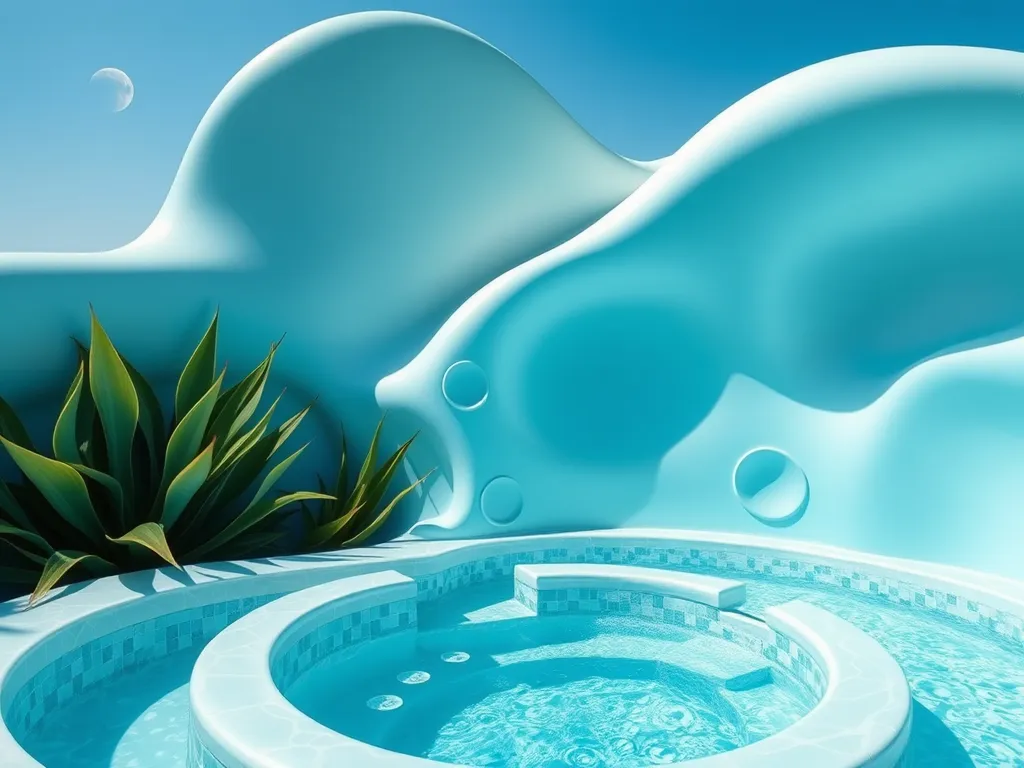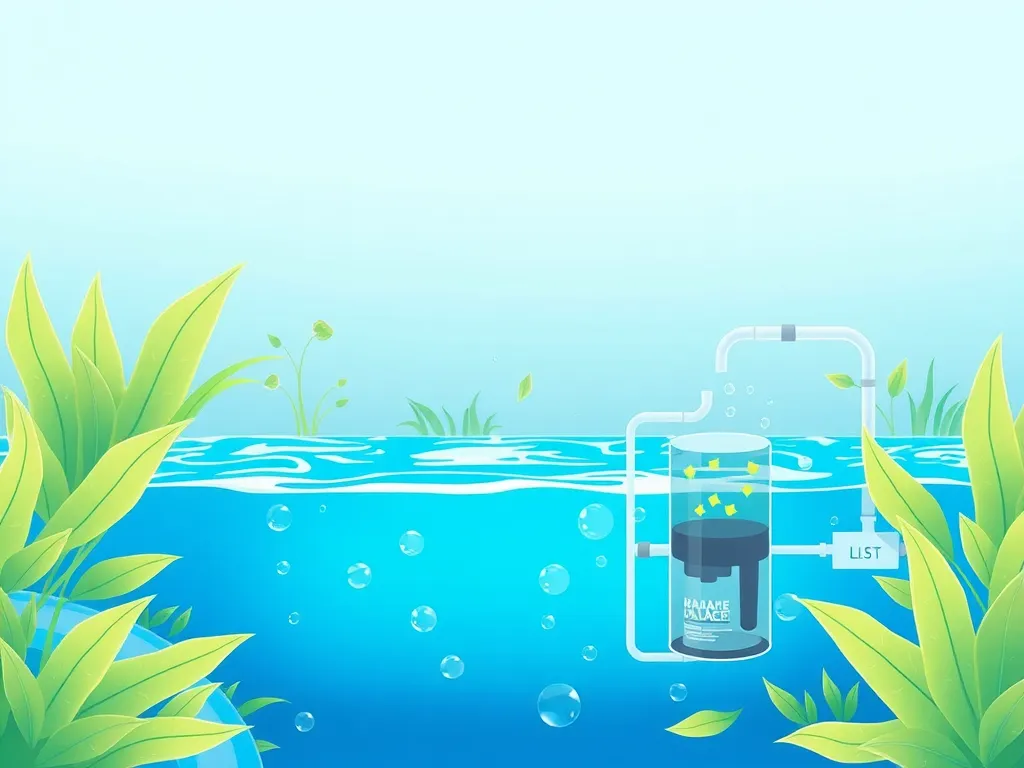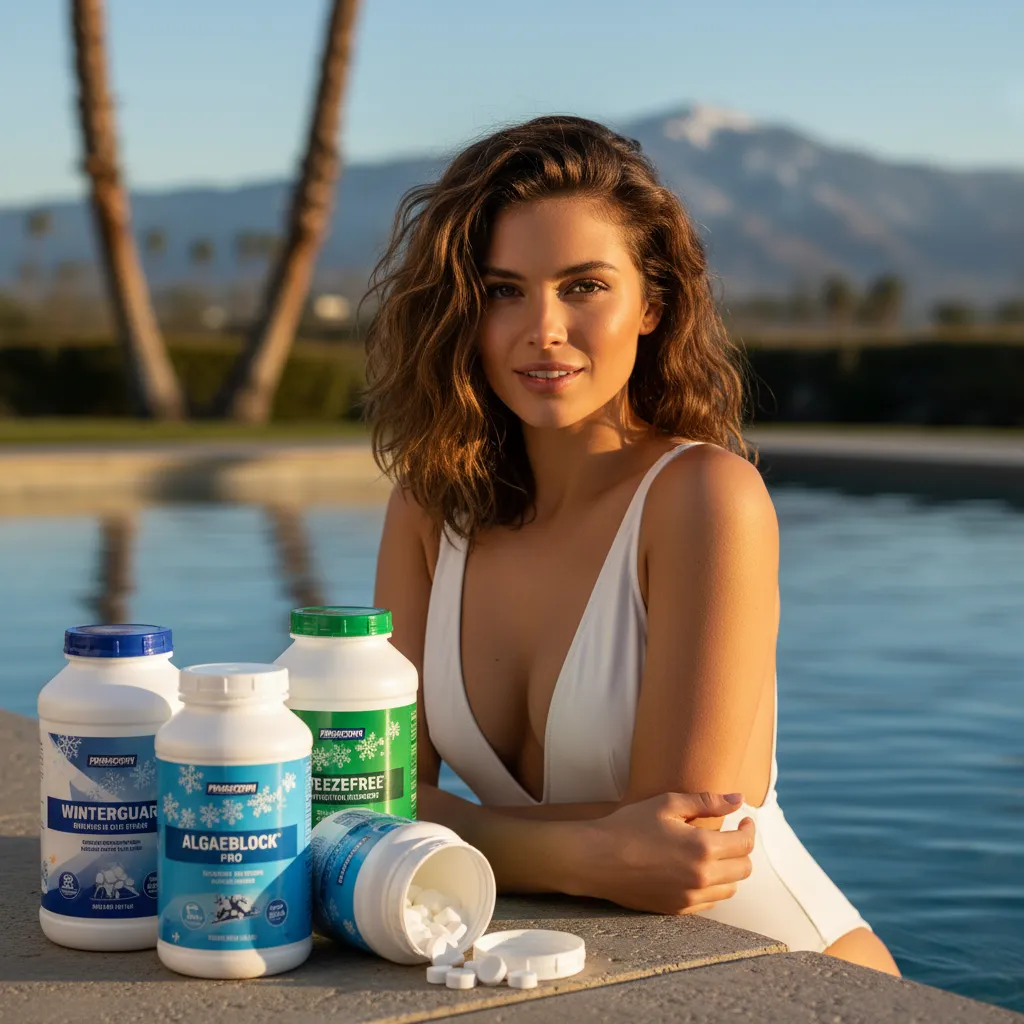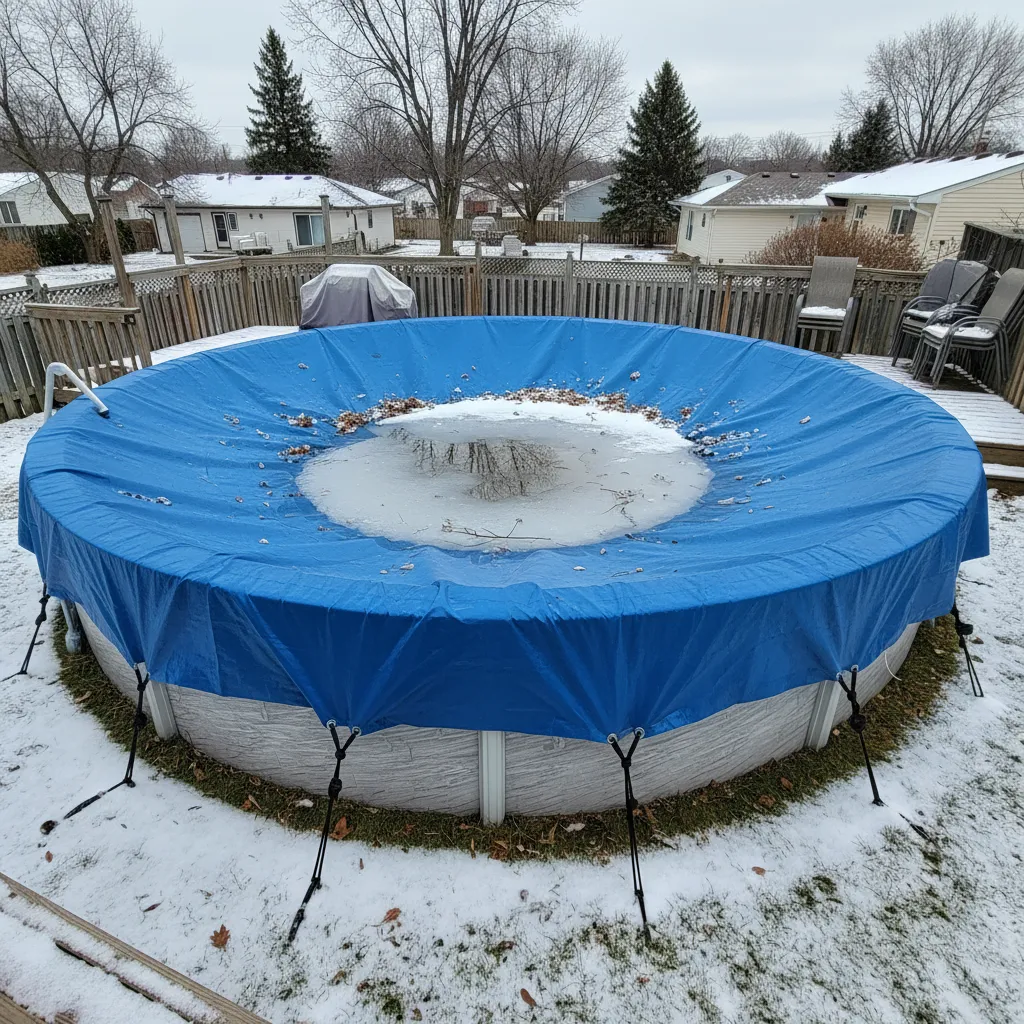Pool Shock Dosage Calculator
Published on: April 10, 2025 | Last Updated: April 13, 2025
Written By: Lila Fairholme
Keeping your pool clean and safe requires proper shock treatment. This calculator helps determine exactly how much pool shock you need. You’ll just need basic water measurements. We’ll calculate everything automatically based on standard pool maintenance guidelines.
Pool Shock Calculator
How to Use
- Measure your pool’s total water volume
- Test current chlorine levels
- Select your preferred units
- Enter your shock product strength
Factors Influencing Pool Shock Dosage
Determining the correct pool shock dosage requires analyzing multiple variables. Each factor directly impacts chemical effectiveness and safety.
Current Chlorine Levels
Free chlorine (FC) concentration dictates how much shock is needed. Ideal FC ranges between 1-3 ppm for daily use. Shocking requires elevating levels to 5-10 ppm. Test water before treatment using a digital tester or chemical test kit. For example, if FC measures 1 ppm in a 20,000-gallon pool, achieving 10 ppm requires adding 9 ppm of chlorine.
Crucial Winterizing Products
"The all-in-one solution for a guaranteed clear spring opening."
All-in-One Closing Chemical Kit
Winter demand is high - check stock
"The 'set & forget' option. This is the easiest winterizing I've ever done."
Simple 3-in-1 Winterizing Balls
Winter demand is high - check stock
"Invest once to protect your liner and prevent a swamp in the spring."
Heavy-Duty Winter Pool Cover
Winter demand is high - check stock
Pool Volume and Gallons
Accurate pool volume is non-negotiable. A 10% error in gallon estimation creates significant dosage discrepancies. Measure length, width, and average depth. Use the formula: Length (ft) × Width (ft) × Average Depth (ft) × 7.5 = Total Gallons. Round-shaped pools require π × Radius² × Depth × 7.5. Underestimating 20k gal pools by 2,000 gallons leads to a 10% underdosing, compromising treatment.
Shock Type and Concentration
Not all pool shocks are equal. Active chlorine concentration varies:
| Shock Type | Chlorine % | Dosage per 10k Gallons (1 ppm) |
|---|---|---|
| Calcium Hypochlorite | 65-75% | 1.3 oz |
| Sodium Dichlor | 55-62% | 1.6 oz |
| Liquid Chlorine | 10-12.5% | 10.7 oz |
Cyanuric Acid (CYA) Stabilizer Levels
CYA protects chlorine from UV degradation but reduces sanitizing power. At 50 ppm CYA, only 50% of free chlorine is active. The My Pool Calculator adjusts dosages based on CYA using the HOCL multiplier. For instance, shocking a 20k gal pool with 80 ppm CYA requires doubling standard chlorine doses.
Types Of Pool Shock and Their Dosage Formulas
Selecting the right shock type involves balancing cost, convenience, and water chemistry.
Calcium Hypochlorite (Cal-hypo)
Commonly sold in 1-lb bags with 68% available chlorine. Raises FC by 5 ppm in 20k gal pools per bag. Dissolve in water before adding to prevent bleaching. Adds 2-3 ppm calcium hardness per treatment. Not ideal for hard water areas. Pool owners often look for ways to use the right amount of chlorine safely. Dilute pool chlorine helps manage water chemistry effectively while keeping pools clean.
Sodium Dichlor
Granular shock containing 56% chlorine and 44% CYA. Each pound increases FC by 5.5 ppm in 20k gal pools but raises CYA by 3 ppm. Avoid in pools with CYA above 50 ppm. Popular for indoor pools or low-stabilizer scenarios. When managing pool chemistry, it’s important to consider the shock pool amount needed for effective sanitation. The correct amount will help balance chlorine levels while preventing excessive build-up of stabilizers.
Liquid Chlorine (Sodium Hypochlorite)
12.5% strength is standard. One gallon treats 20k gal pools to boost FC by 6 ppm. No residue or CYA impact. Degrades rapidly; store in cool, dark places. Requires 4x more volume than Cal-Hypo for equivalent dosing. To maintain balanced water chemistry, knowing how much muriatic acid to add is essential. A muriatic acid pool calculator can help you determine the precise amount needed for your specific pool size.
Non-chlorine Shock (Potassium Monopersulfate)
Oxidizes contaminants without chlorine. Use 1.5 lbs per 20k gallons weekly. Doesn’t alter FC levels. Ideal for spas or chlorine-sensitive swimmers. Doesn’t address algae blooms. To keep your pool clear and free of algae, it’s important to consider the right algaecide. A best pool algaecide guide can help you choose the most effective products for your needs.
Also See: Pool Painting Cost Calculator: Estimate Your Costs

Calculating Pool Shock Dosage for 20,000 Gallon Pools
Dosage adjustments are critical for pools at this common residential size.
Standard Dosage for Routine Maintenance
Weekly shocking prevents algae and bacteria. Target 5-10 ppm FC based on usage. For Cal-Hypo: (Desired FC – Current FC) × 20,000 ÷ (10,000 × 0.68) = Pounds Needed. Example: From 2 ppm to 10 ppm requires (8 × 20,000) ÷ (10,000 × 0.68) = 2.35 lbs. To keep your pool clean, it’s important to manage chlorine levels carefully. A bleach pool calculator can help you determine the right amount of bleach needed for your specific pool size and usage.
Shock Dosage for Algae Blooms
Green algae demands FC at 30% of CYA levels. For 50 ppm CYA, shock to 15 ppm FC. Use 3 lbs Cal-Hypo or 2.5 gallons liquid chlorine. Repeat every 24 hours until clear. Brush walls to dislodge biofilm. These steps are crucial for maintaining water clarity and preventing algae growth. High pH levels in the pool can also encourage algae, making regular testing and adjustment important.
Adjusting for CYA Levels
High CYA necessitates chlorine buffering. The formula: Required FC = (CYA × 0.075)² At 100 ppm CYA, maintain 7.5 ppm FC daily. Shocking requires 30 ppm FC. This demands 6 lbs Cal-Hypo for 20k gal pools—triple standard doses. Pools with high CYA levels need careful management to keep chlorine effective. High CYA can make it harder for chlorine to do its job, increasing the risk of algae growth.
Common Mistakes in Pool Shocking
Even experienced pool owners make these errors.
Overestimation Of Pool Volume
Assuming a 20k gal pool is 25k gallons leads to 25% underdosing. Measure slope depth in variable-depth pools. 16×32 ft pools with 3-6 ft depth average 4.5 ft: 16×32×4.5×7.5=17,280 gallons—not 20k. Pools come in various sizes, including 24-foot above ground pool models. A 24-foot above ground pool typically holds around 12,000 to 15,000 gallons of water.
Ignoring CYA Impact on Chlorine Efficiency
Adding shock without CYA testing wastes chemicals. At 100 ppm CYA, 10 ppm FC delivers only 1 ppm active HOCL—ineffective against pathogens. Partial drain/refill reduces CYA if >80 ppm.
Mixing Different Shock Types
Combining Cal-Hypo and trichlor tablets creates dangerous chlorine gas. Never blend chemicals. Store oxidizers separately. Allow 24-48 hours between different shock treatments. Proper pool maintenance is key for safety. Using chlorine tablets helps keep the water clean and balanced.
FAQs on Pool Shock Dosage
Addressing frequent concerns from pool owners.
How Often Should I Shock My Pool?
Weekly during peak season. Biweekly in cooler months. After heavy rainfall, parties, or visible algae. Saltwater pools require monthly shocking due to lower chlorine residuals. Regular maintenance helps keep your pool clean and inviting. Choosing a reliable weekly pool service ensures that you can enjoy your pool stress-free.
Can I Swim Immediately After Shocking?
Wait until FC drops below 5 ppm. For non-chlorine shock, swimming resumes after 15 minutes. At 12 gallons shock in 20k gallons (erroneous dosing), FC would exceed 100 ppm—wait 5-7 days. It’s important to give the pool time to balance after shocking. Taking this time ensures a safe swimming environment for everyone.
What if I Exceed Recommended Dosage?
Over 10 ppm FC risks liner fading, metal corrosion, and swimmer irritation. Neutralize with sodium thiosulfate: 2 oz per 10k gallons lowers FC by 1 ppm. Run filters continuously. Maintaining proper chemical balance is important for pool health. Pool filters can absorb chemicals, helping to keep the water safe and clean.

Special Cases in Pool Shock Application
Unique scenarios demand tailored approaches.
High CYA Pools Requiring Dilution
CYA >100 ppm renders chlorine ineffective. Drain 50% water, refill, then shock. For 20k gal pools, replace 10k gallons. Test CYA weekly during summer.
Saltwater Pool Shocking Differences
Salt systems generate 1-3 ppm FC daily. Shock monthly with 2 lbs Cal-Hypo. Avoid lithium hypochlorite—damages salt cells. Test salinity (2700-3400 ppm) post-shock.
Cold Weather Shock Adjustments
Below 60°F, algae growth slows but doesn’t stop. Shock to 5 ppm FC monthly. Use liquid chlorine—granular shocks dissolve slower in cold water.
Benefits Of Accurate Pool Shock Dosing
Precision yields tangible results.
Preventing Algae Resistance
Underdosing allows algae strains like black algae to develop immunity. Maintain shock levels for 24 hours to penetrate cell walls.
Protecting Pool Equipment
Excessive chlorine (>20 ppm) degrades heater elements and pump seals. Balanced dosing extends equipment lifespan by 3-5 years.
Optimizing Chemical Costs
Proper dosing saves $150-$300 annually. For 20k gal pools, precise Cal-Hypo use costs $15 monthly versus $40 for guesswork.
Tips for Effective Pool Shock Treatment
Maximize results with these practices.
Pre-shock Water Testing
- Test FC, pH, TA, CYA
- Adjust pH to 7.2-7.6 for optimal efficacy
- Clean filters 24 hours pre-shock
Timing and Weather Considerations
Shock at dusk to prevent UV loss. Avoid rainy days—dilutes chemicals. Wait 48 hours after algaecide use.
Post-shock Filtration Practices
Run pump 24-48 hours. Backwash sand filters when pressure rises 8-10 psi. Vacuum debris after chlorine drops below 5 ppm.
Maintaining Balanced Pool Chemistry Post-shock
Sustaining results requires follow-through.
Ph and Alkalinity Adjustments
Shocking raises pH temporarily. After FC <5 ppm, test and add muriatic acid if pH >7.8. Maintain alkalinity 80-120 ppm with sodium bicarbonate.
Retesting Chlorine Levels
Confirm FC drops to 1-3 ppm within 48 hours. Slow reduction indicates organic contamination—repeat shock. Use FAS-DPD tests for accuracy.
Long-term Stabilizer Management
Check CYA monthly. Use My Pool Calculator to track trends. Replace 10% water quarterly if using stabilized shocks.
Consistent shock dosing preserves water clarity and safety. For scenario-specific calculations, consult My Pool Calculator to factor in all variables.
Additional Resources for You:
- Pool & Hot Tub Alliance (PHTA). (2021). ANSI/APSP/ICC-11 Standard for Water Quality in Public Pools and Spas. Alexandria, VA: PHTA.
- Hamilton Chemicals – How to treat a green pool? Shock dosing at the beginning of the season?
- Dosing Calculator





